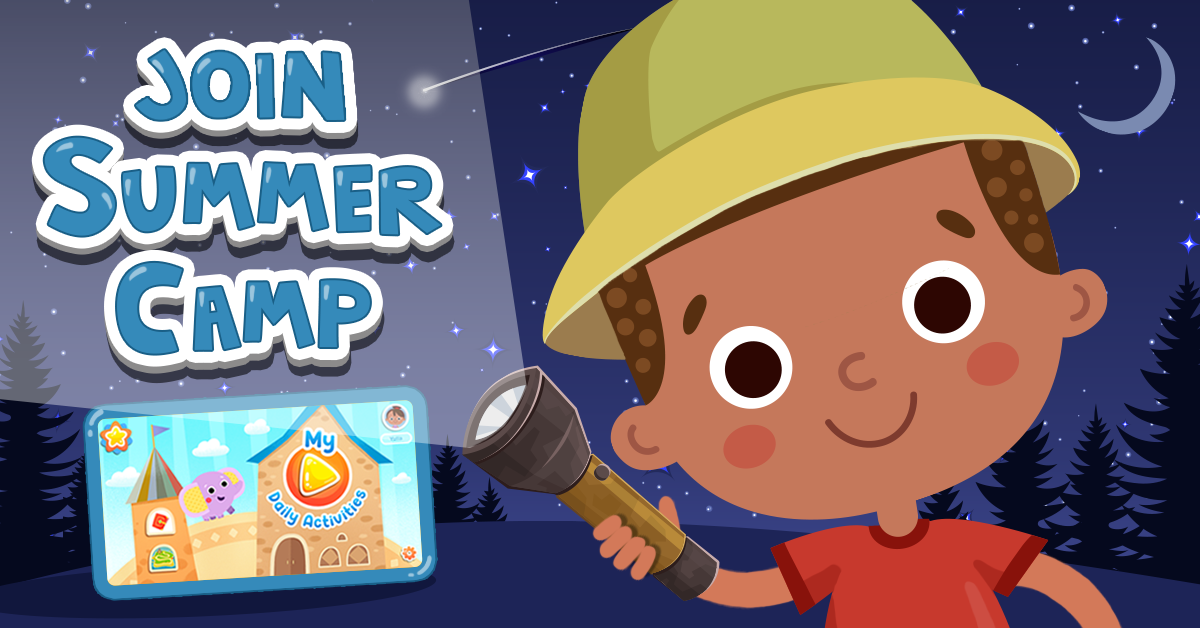Multiplication practice Plants and Animals Worksheets for Ages 4-8
10 filtered results
-
From - To
Boost your child's math skills with our engaging "Multiplication Practice: Plants and Animals Worksheets" designed for children ages 4-8! These fun and interactive worksheets combine essential multiplication exercises with colorful images of plants and animals, making learning enjoyable and relatable. Young learners will enhance their multiplication fluency while exploring the fascinating world of nature. Our age-appropriate activities cater to various learning styles, ensuring that each child develops a strong foundation in mathematics. Perfect for home or classroom use, these worksheets are a great way to integrate math with science concepts. Start fostering a love for learning today with our motivational resources!
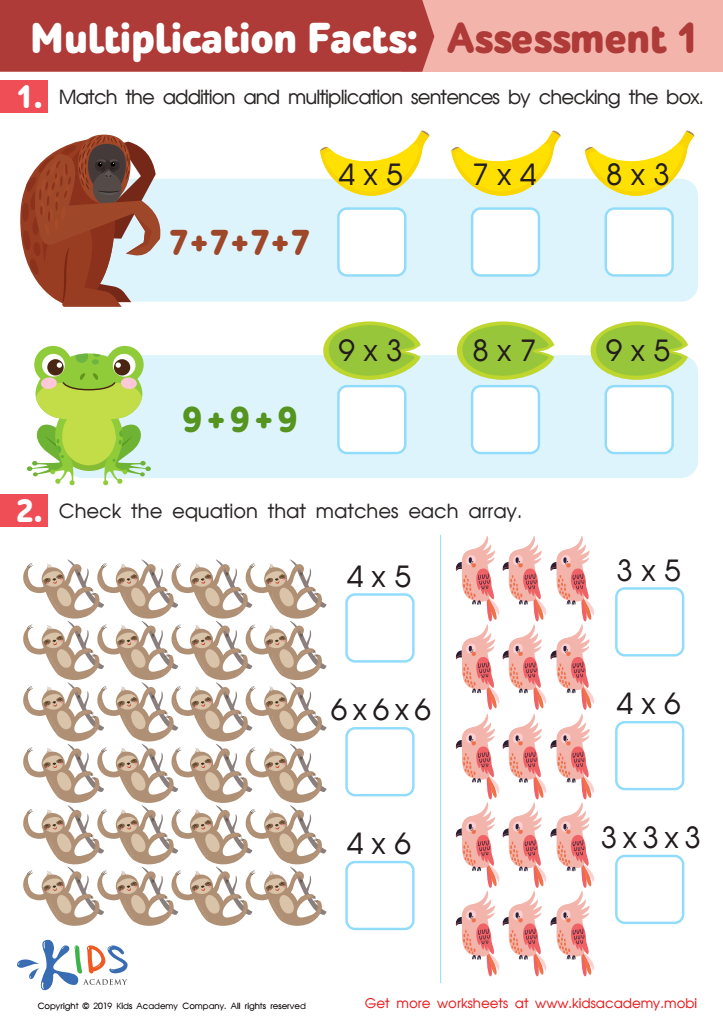

Multiplication Facts: Assessment 1 Worksheet
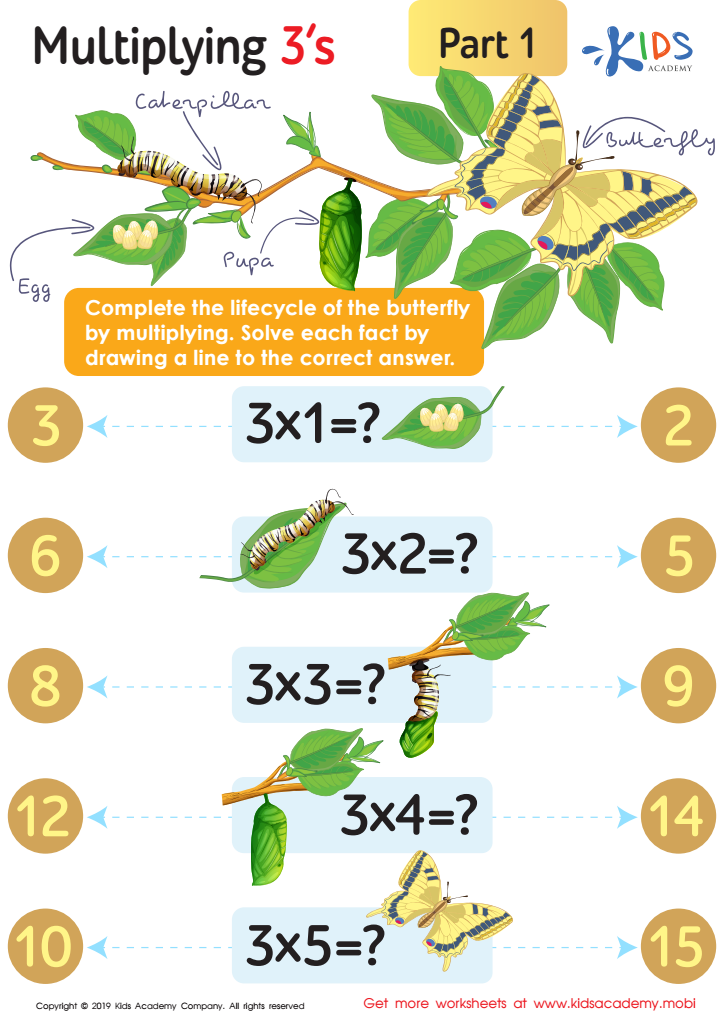

Multiplying 3’s Part 1 Worksheet
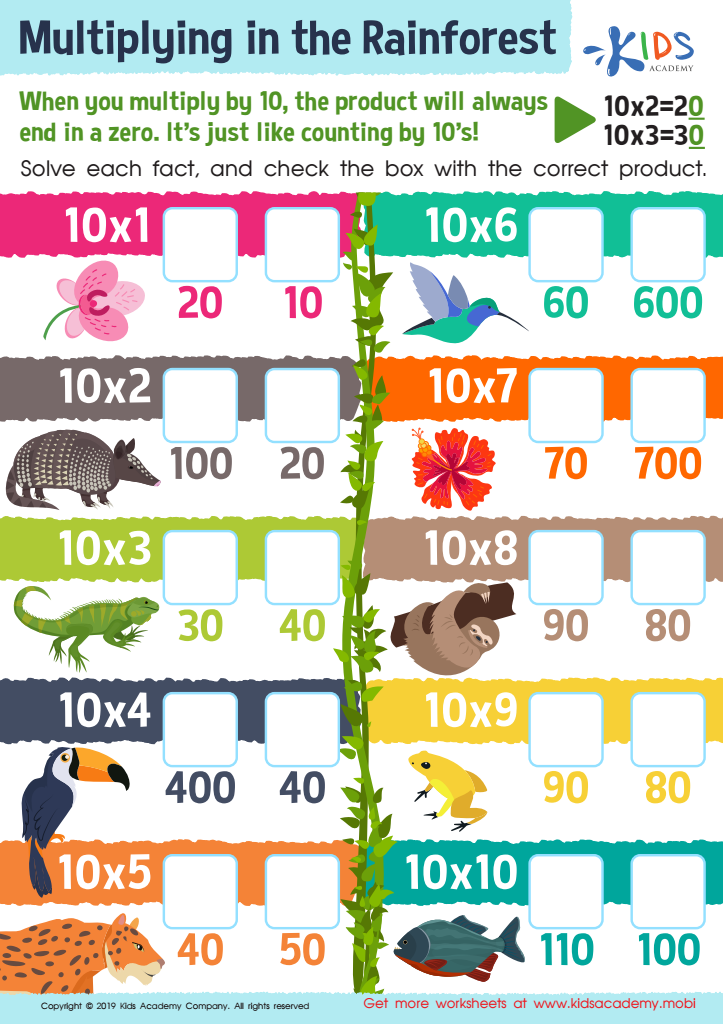

Multiplying in the Rainforest Worksheet
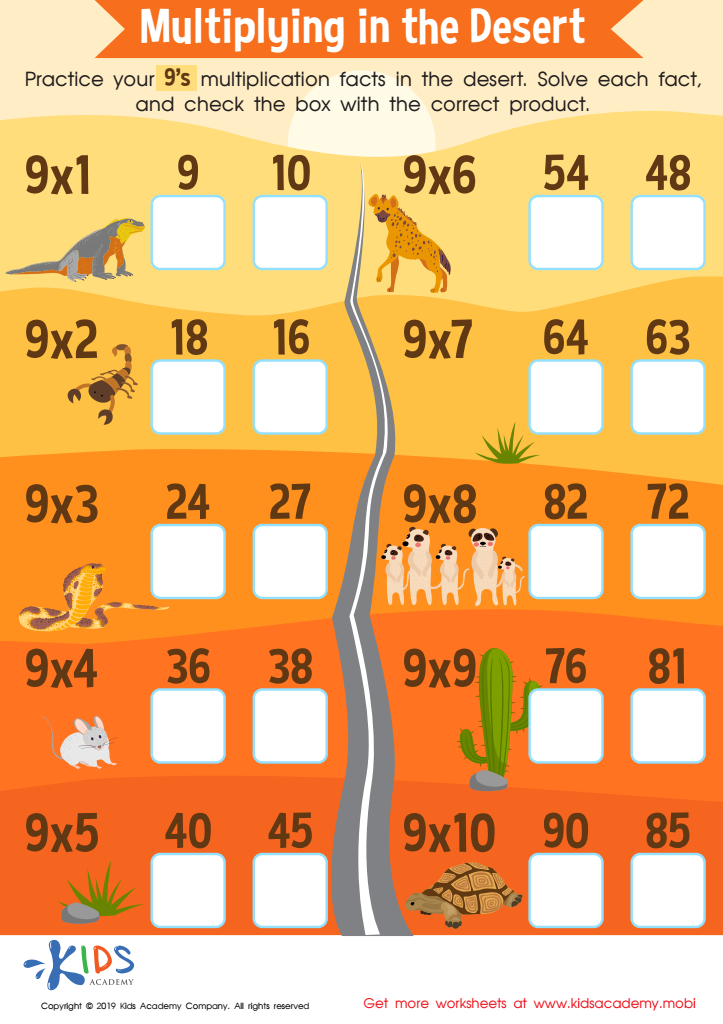

Multiplying in the Desert Worksheet


Bird Beak Multiplication Worksheet
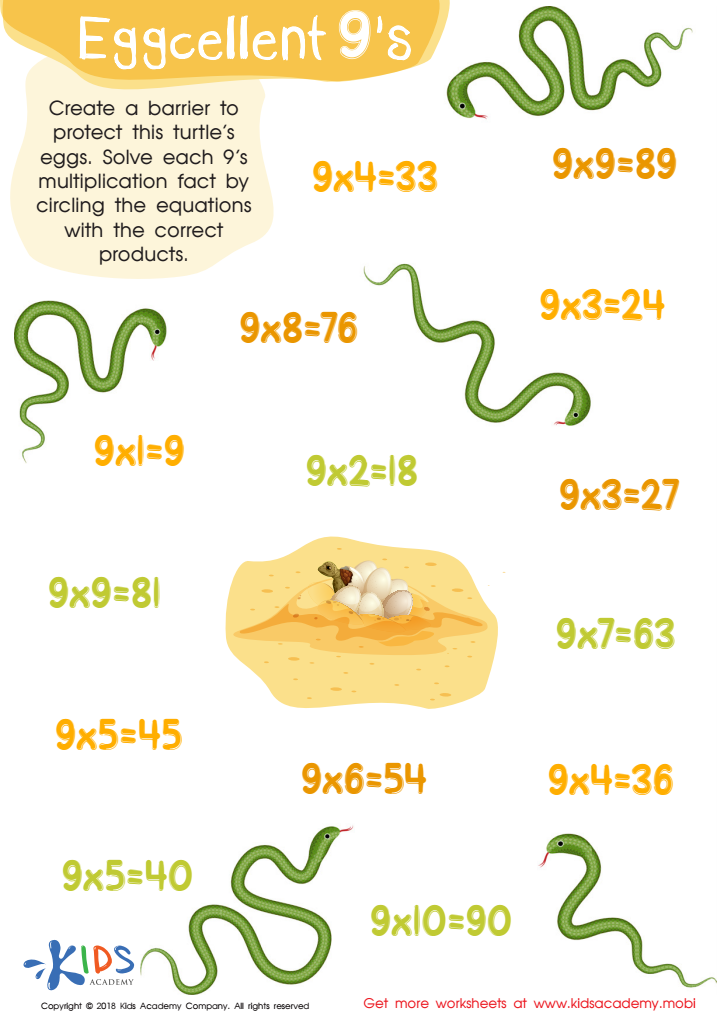

Eggcellent 9’s Worksheet
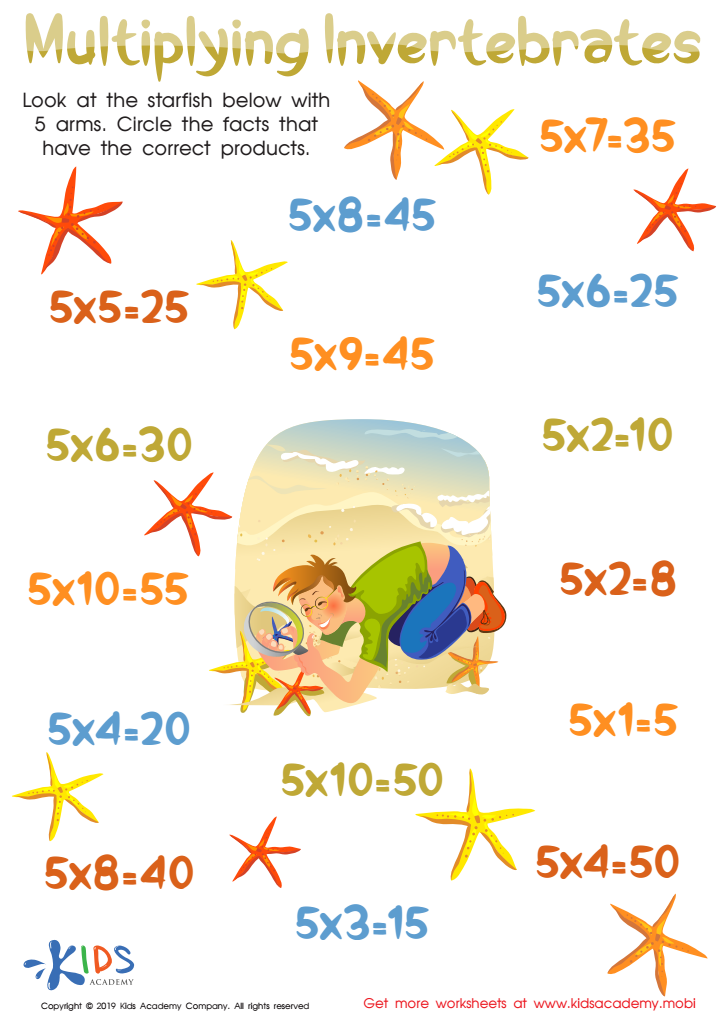

Multiplying Invertebrates Worksheet
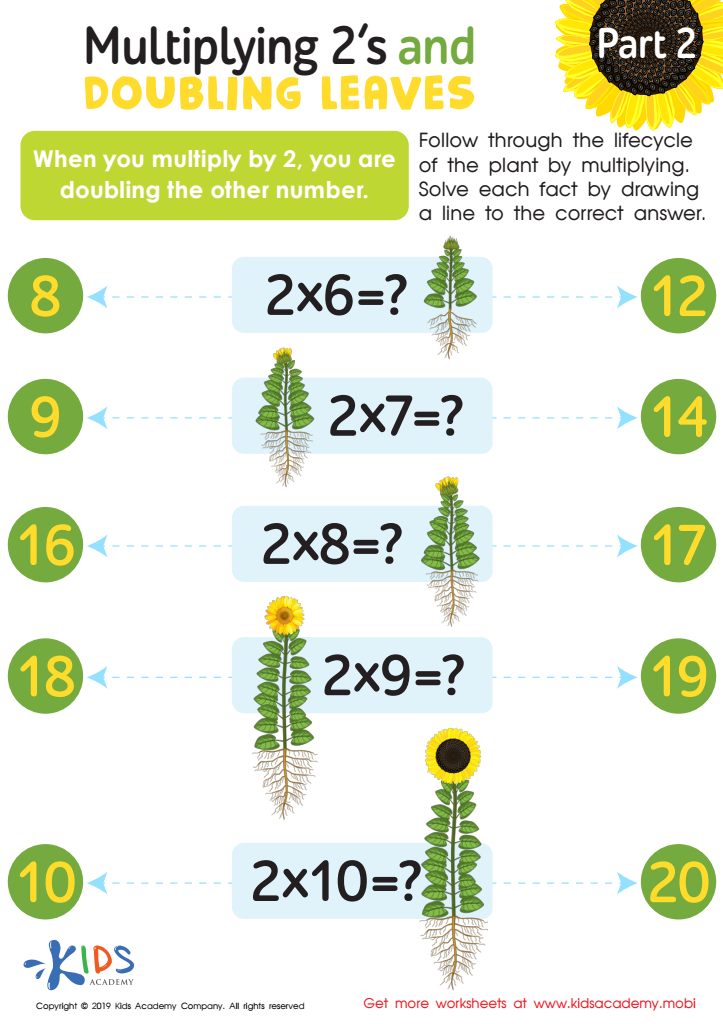

Multiplying 2’s and Doubling Leaves Part 2 Worksheet
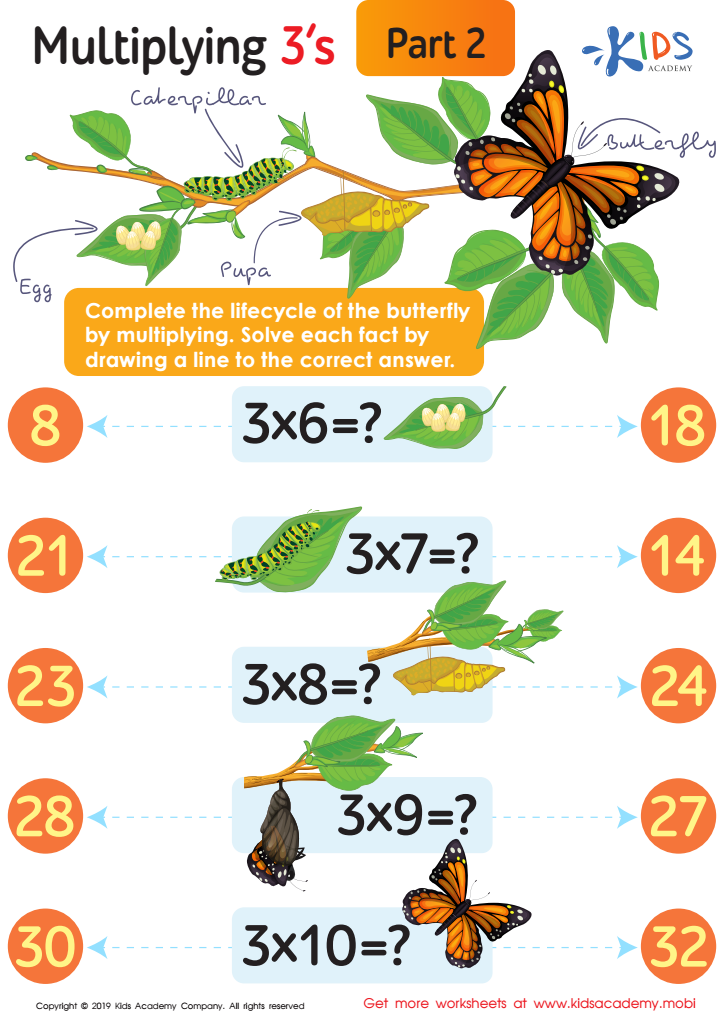

Multiplying 3s Part 2 Worksheet
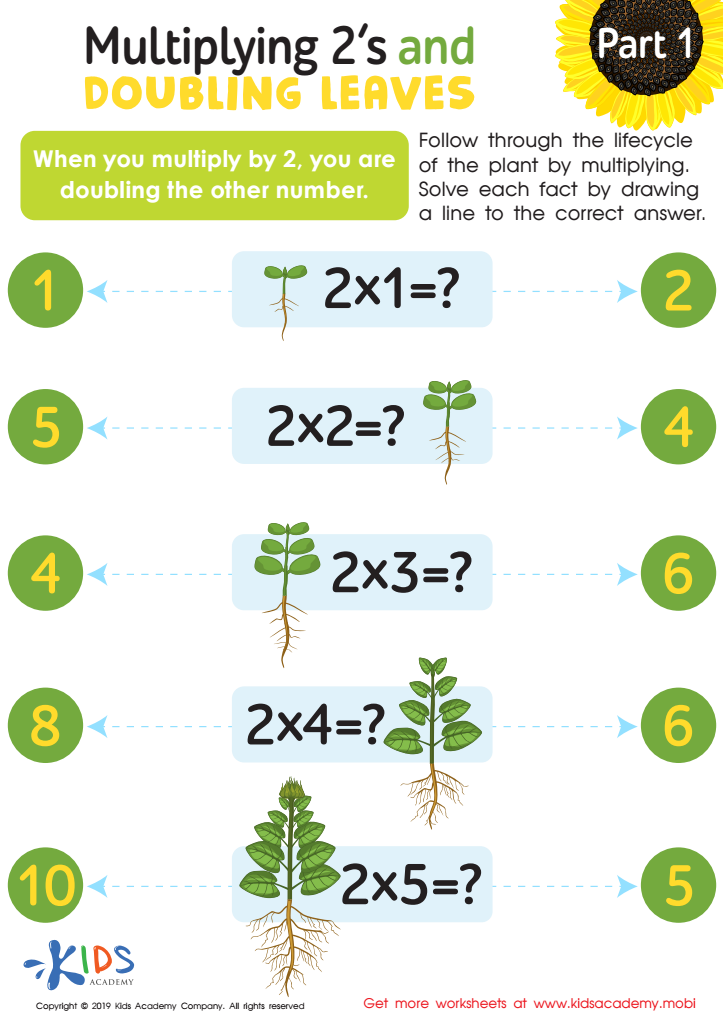

Multiplying 2’s and Doubling Leaves Part 1 Worksheet
Parents and teachers should prioritize multiplication practice related to plants and animals for children aged 4-8 for several reasons. First, incorporating familiar and engaging themes, like nature, into mathematical concepts can enhance a child's interest in both math and science. When children connect numbers with tangible subjects, such as counting leaves, fruits, or animal groups, they find learning more relevant and enjoyable.
Moreover, developing early multiplication skills lays a strong foundation for future math comprehension. Understanding multiplication through relatable contexts encourages logical thinking and problem-solving abilities, essential skills they will use throughout their academic journey. By using plants and animals, educators introduce word problems that develop critical thinking; for example, "If each tree produces 5 apples and we have 3 trees, how many apples do we have?"
Additionally, this approach promotes biodiversity awareness and environmental responsibility. As children engage with content about animals and plants, they develop an appreciation for nature while simultaneously enhancing their numerical skills.
Ultimately, integrating multiplication with plants and animals not only constructs a solid mathematical foundation but also fosters curiosity, creativity, and a sense of connection to the world around them, nurturing well-rounded learners.
 Assign to My Students
Assign to My Students







